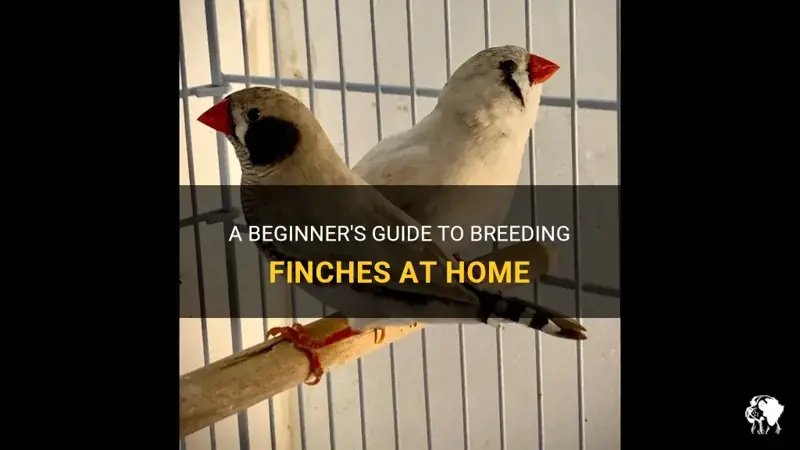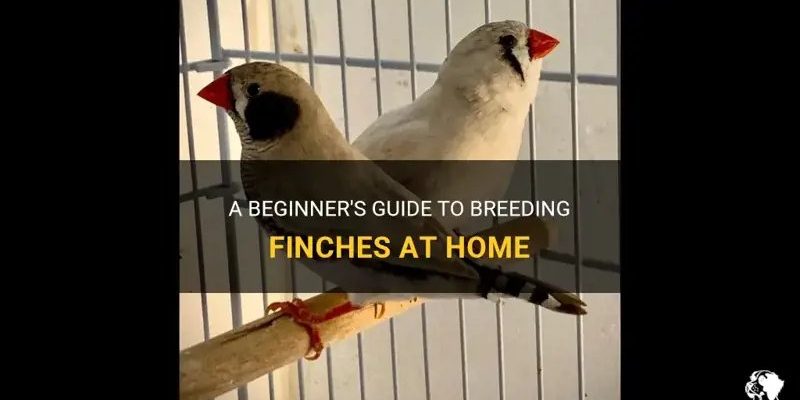
Before diving into the details, let’s get to know the stars of our show. There are several types of finches you can breed at home. Some popular choices include the Zebra Finch, Society Finch, and Gouldian Finch. Each has its unique characteristics and needs. Understanding these differences is crucial for ensuring a successful breeding experience. So grab your favorite cup of coffee, and let’s explore how to breed finches successfully at home!
Choosing the Right Finch Species
When it comes to breeding finches, the first step is choosing the right species for your lifestyle and skill level. For beginners, Zebra Finches are often recommended due to their hardy nature and ease of care. They come in various colors and are incredibly social creatures. Their cheerful chirps will fill your home with lovely sounds.
If you’re ready for a bit more of a challenge, you might consider Gouldian Finches. Known for their vibrant plumage, they can be more sensitive to environment changes and require specific conditions to thrive. Society Finches are also a great choice for beginner breeders. They have a gentle disposition and are less picky about breeding conditions.
Knowing your finches is key. If you feel overwhelmed with choices, think about what you find most appealing. Are you drawn to their colors, songs, or personalities? This reflection can guide your decision.
Setting Up the Ideal Environment
Creating the right environment is crucial for finch breeding. You want their living space to be safe, comfortable, and stimulating. Start with a spacious cage, as finches love to fly around. A good rule of thumb is to have at least 18 inches of height and 36 inches of width for breeding pairs.
When designing their habitat, consider adding perches of varying heights and materials. Finches enjoy hopping between different spots. You can also include plants or bird-safe decorations to mimic their natural environment.
Don’t forget about the temperature and humidity. Finches thrive in temperatures between 65°F and 80°F (18°C to 27°C). Keep an eye on humidity levels, too, aiming for about 50-60%. A simple hygrometer can help you monitor this, ensuring your birds feel right at home.
Feeding Your Finches for Breeding Success
A well-balanced diet is essential when breeding finches. Just like people, the quality of their food affects their health and breeding ability. Start with a high-quality finch seed mix that includes a variety of seeds such as millet, canary seed, and flaxseeds.
To give them a nutritional boost, add fresh fruits and vegetables to their diet. Finches love options like apples, carrots, and leafy greens. These foods provide vitamins that are crucial for your finch’s health, especially during breeding.
Also, consider providing cuttlebone or mineral blocks. These sources of calcium help with egg production and overall health. A well-fed finch is a happy finch, which, in turn, leads to successful breeding.
Understanding Finch Breeding Behavior
Before you start the breeding process, it’s important to understand finch behavior. Finches are social birds and generally prefer to live in pairs or small groups. When setting up breeding pairs, make sure they are compatible. Observe their behavior; do they seem to enjoy each other’s company? Signs of affection, like preening or feeding each other, are good indicators.
Once your pairs are established, they usually begin courtship. This can include singing, dancing, and displaying their plumage. It’s a fascinating process to witness! Breeding typically occurs when the female is in good condition, so make sure she has plenty of food and a comfortable nesting area.
Setting up nesting materials like soft grasses, feathers, and coconut fibers will encourage them to nest. Watch for signs they are preparing to lay eggs, which usually happens within a few weeks of pairing.
Nesting and Caring for Eggs
Once your finches start laying eggs, it’s crucial to provide a quiet and safe environment for them. A nesting box should be placed high in the cage, filled with soft nesting material to keep the eggs warm. The female will do most of the incubation, typically laying 4-6 eggs.
During this period, it’s important to minimize disturbances. Feeding them a high-protein diet will help both parents care for the eggs and any hatchlings. Soft foods like boiled eggs or egg food are excellent choices during this time.
After about two weeks, the eggs will hatch, and you’ll see tiny, fluffy chicks. It’s an exciting moment, but remember that the parents will take care of them at this stage. Just keep an eye on the family to make sure everyone is thriving.
Raising Finches: From Chicks to Adults
Once the chicks hatch, they grow quickly. For the first week or so, they’ll rely on their parents for food. After that, they’ll start testing out their wings and may even begin to eat solid food. You can support their development by providing lots of nutritious options in the cage.
As the chicks grow, it’s also essential to monitor their social interactions. Young finches need to learn from their parents what it means to be a finch. Encourage socialization by having a spacious cage and plenty of perches.
Once they reach about six weeks of age, you’ll notice them becoming more independent. At this point, you might consider separating them from the adults. This helps prevent overcrowding and gives the young finches the chance to establish their own territory.
Common Challenges and Troubleshooting
Even with the best preparations, breeding finches can come with challenges. Some common issues include eggs not hatching or a lack of interest from one of the breeding pair. If you notice that one finch seems uninterested, it may be worth considering a different partner.
In cases where eggs don’t hatch, it’s essential to check the conditions. Are the parents stressed? Is the temperature right? Sometimes, the environment can affect breeding success.
Also, be aware of potential health issues. Finches can be prone to illnesses if they’re not cared for properly. Regular vet check-ups can help catch any problems early on. Take your time with breeding; patience and observation are your best tools.
Breeding finches at home can be a delightful journey. By understanding their needs and behaviors, you can create a nurturing environment that encourages them to thrive. Enjoy the process, and before you know it, your finch family will be chirping happily around you!

